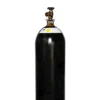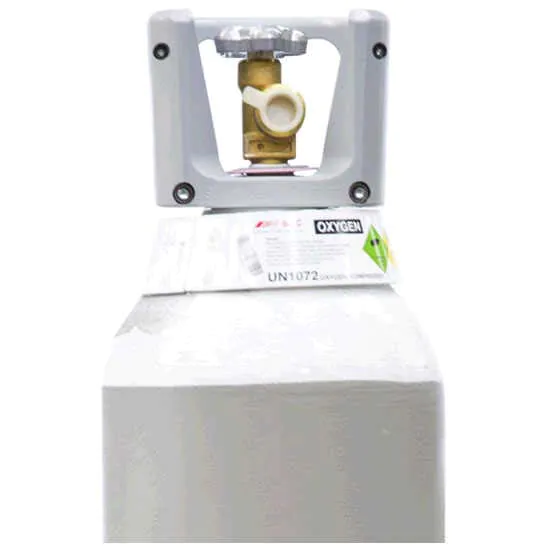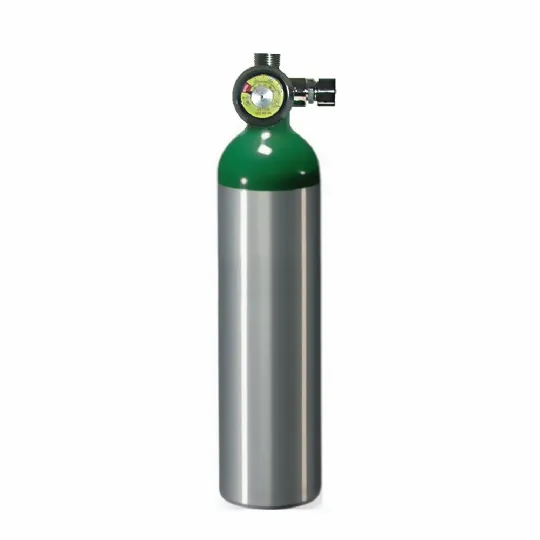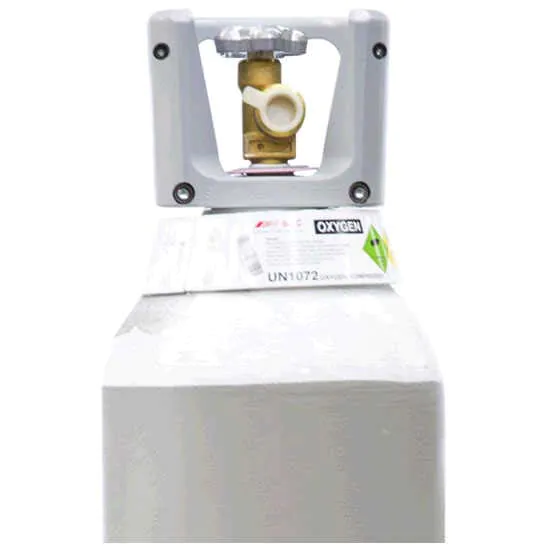$896.03 – $1,262.05
Key Features
Refrigerant Gas Distributor: Refrigerant Gas Suppliers™ does not approve the use of industrial or special gases grade oxygen for medical use. These Oxygen N6.0 Cylinder are filled to different standards and should not be inhaled or used for medical purposes. Medical oxygen is a licenced medical gas and, as such, can only be supplied to approved healthcare professionals for clinical use. Should you require medical oxygen for personal use, this needs to be via a prescription from your GP, which will be fulfilled via your regional supplier.
Oxygen N6.0 (N6.0 Grade O2) gas cylinder.
Oxygen N6.0 Cylinder Grade Classification
Pure gases are classified by grade
The first digit of the grade classification indicates the ‘number of nines’ purity, e.g. N3.0 = 99.9% purity.
The second digit is the number following the last nine, e.g. N4.6 helium has a guaranteed minimum purity level of 99.996%.
| Grade | Minimum purity | Total impurities |
|---|---|---|
| N2.0 | 99% | 1% |
| N3.0 | 99.9% | 1000ppm |
| N4.0 | 99.99% | 100vpm |
| N5.0 | 99.999% | 10vpm |
| N6.0 | 99.9999% | 1vpm |
| N7.0 | 99.99999% | 100vpb |
Precautions for safe handling
Only experienced and properly instructed persons should handle gases under
pressure. Use only properly specified equipment which is suitable for this product,
its supply pressure and temperature. Keep equipment free from oil and grease.
Open valve slowly to avoid pressure shock. Use only oxygen approved lubricants
and sealants. Use only with equipment cleaned for oxygen service and rated for
the pressure. Refer to supplier’s handling instructions. The substance must be
handled in accordance with good industrial hygiene and safety procedures.
Protect containers from physical damage; do not drag, roll, slide or drop. Do not
remove or deface labels provided by the supplier for the identification of the
container contents. When moving containers, even for short distances, use
appropriate equipment eg. trolley, hand truck, fork truck etc. Secure cylinders in
an upright position at all times, close all valves when not in use. Provide adequate
ventilation. Suck back of water into the container must be prevented. Do not allow
backfeed into the container. Avoid suckback of water, acid, and alkalis. Keep
container below 50°C in a well-ventilated place. Observe all regulations and local
requirements regarding the storage of containers. When using do not eat, drink or
smoke. Store in accordance with local, regional, national/international
regulations. Never use direct flame or electrical heating devices to raise the
pressure of a container. Leave valve protection caps in place until the container
has been secured against either a wall or bench or placed in a container stand and
is ready for use. Damaged valves should be reported immediately to the supplier
Close container valve after each use and when empty, even if it is still connected to
equipment. Never attempt to repair or modify container valves or safety relief
devices. Replace valve outlet caps or plugs and container caps where supplied as
soon as the container is disconnected from the equipment. Keep container valve outlets
clean and free from contaminants, particularly oil and water. If user experiences
any difficulty operating the container valve, discontinue use and contact the supplier.
Never attempt to transfer gases from one container to another. Container valve
guards or caps should be in place.
| Cylinder Size | V (2.12m3), L (10.64m3) |
|---|











Reviews
There are no reviews yet.